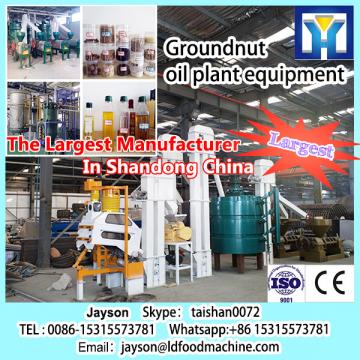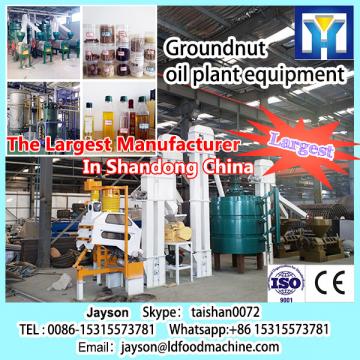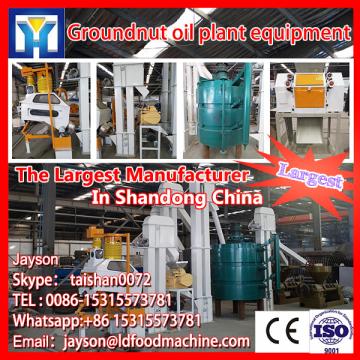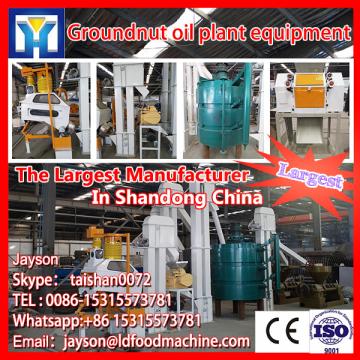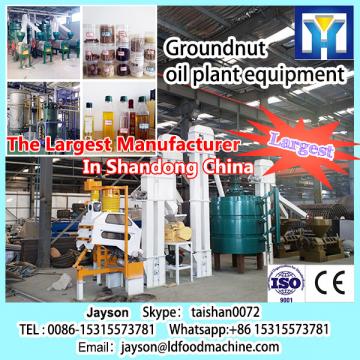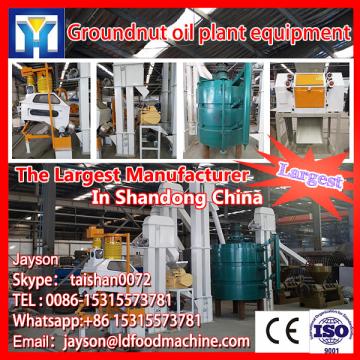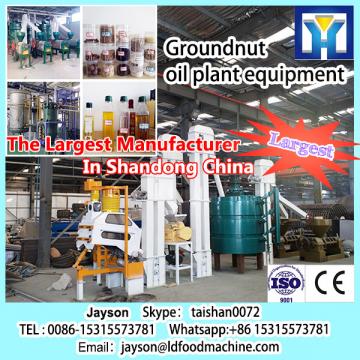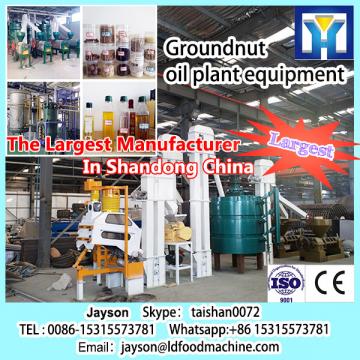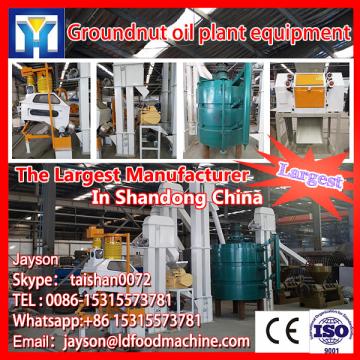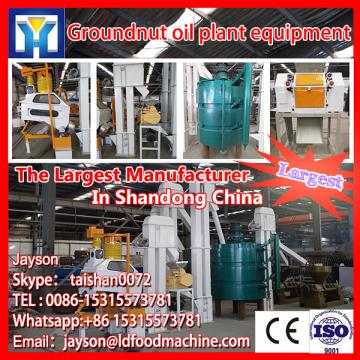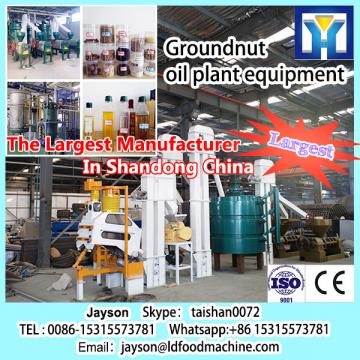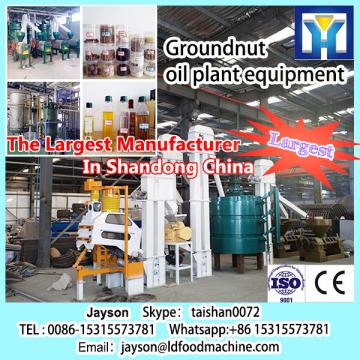
- Small Oil Pressing Machine - Leader Machinery
- Industrial automatic continuous fryer Soybean Oil Plant
- Address3rd Road, High-tech Zone, Jinan City, Shandong Province
- Factory Address3rd Road, High-tech Zone, Jinan City, Shandong Province
- Worktime9:00--18:00
- Phone(Working Time)086-0531-885125
- Phone(Nonworking Time)086-0531-881256
- Fax086-0531-885125
Groundnut Oil Plant
Contact NowPeanut oil processing technology
High-oil peanuts are used in processing oil extraction, generally including the separation of embryos and the extraction of embryos. Separation method of embryos The separation of peanut embryos mainly includes dry peeling and embryo extraction and wet grinding. The raw material is directly peeled and extracted without water treatment, and is also called dry peeling and embryo making. Generally, the grain moisture content can be used at about 18%, but the processing loss is large; the wet grinding method for extracting the embryo is to remove the seed and then peel it to extract the embryo.
Peanut oil production process:
Peanut is used as raw material. In the process of producing peanut meal, peanut starch or peanut starch sugar, about 8%--12% of peanut germ can be recovered, which can be used to prepare peanut germ oil and peanut germ protein. Peanut germ oil can be refined not only into nutritious edible oils such as salad oil and margarine, but also as raw materials for pigments, paints and soaps. The degreased cake contains rich nutrients such as protein and can be used as a nutritional supplement for various foods.
Peanut oil production equipment
The process, equipment and operation technology of peanut germ to prepare oil and fat are basically the same as those of other oils, and all must be cleaned--→dry--→softened--→rolled--→steamed--→oiled --→Refining and other processes.
1. Cleaning: The peanut germ recovered from the peanut meal is mixed with more peanut powder, ground powder and dander, and needs to be sieved with a double vibrating sieve. Screen mesh, the first layer is removed from the bulk, with 1.5x1.5 mesh/cm2; the second layer removes peanut powder, minced meat and dander, using 4x4 mesh/cm2, if the sieve is still mixed For more embryos, a 5x5 mesh/cm2 or 7x7 mesh/cm2 sieve can be used to reduce the loss of peanut germ. The peanut germ recovered from peanut starch is mixed with impurities such as dander and radicle sheath. It needs to be rinsed several times with clear water or a trough in clear water. If a cyclone separator is provided, the centrifugal effect generated by the swirling flow can be utilized. , the germ is isolated.
2. Drying: The peanut germ recovered in the process of making peanut meal and peanut starch, after being cleaned, contains high moisture, and the activity of the enzyme is strong and easily contaminated by microorganisms, causing deterioration and rancidity of the oil, which affects the yield of the oil product and Quality will reduce the value of the use of biscuits. In order to maintain the freshness of the peanut germ during storage and transportation, the cleaned peanut germ should be dried or dried to a moisture content of less than 10%.
3. Softening: The first step in making fat for peanut germs. In this process, the moisture content of the peanut germ is reduced to less than 10% while being heat treated, and the embryo is plastically changed. Softening common hot air dryer or hot steam roller dryer, the embryo should not rise too fast when softening, to prevent premature protein denaturation and loss of elasticity of the embryo, which in turn affects the rolling, steaming and oil extraction deal with.
4. Rolling embryo: After the softening of the peanut germ, it is rolled into a 0.3--0.4mm thin sheet by a roller mill to promote the destruction of the cell structure, shorten the oil passage, and facilitate the steaming and pressing of the embryo.
5. Steaming: When the raw material enters the steaming and frying equipment, the moisture content is not less than 12%, heated by 40--50 minutes, and finally the temperature of the embryo exceeds 100 °C, and the moisture content of the embryo is gradually reduced from 12% to 3. %--4%, the color of the embryo is gradually changed to brownish red, and the smell can be smelled without being scorched.
6. Pressing: The methods of preparing oils are pressing, extraction and water. According to the equipment used and the scale of production, the pressing method can be divided into wood press, screw press and hydraulic press. Since the production of peanut germ oil is mostly carried out by small scale and auxiliary workshops, it is most suitable to use a screw press.
The model can be determined according to the scale of production. The larger-scale production plant can be equipped with a 200-type screw press equipped with steaming and frying equipment. The machine has both steaming and frying, continuous operation, simple operation, and steaming and pressing. The oil is completed in one set at a time.
When the temperature of the steamed embryo reaches 115--120 ° C and the moisture content is 2% - 4%, it directly enters the press to press the oil. At this time, the room temperature should be kept at 30--40 ° C, and a small amount of embryos should be initially put in. After the normal operation of the press, the temperature of the press is increased, and then the standard feed amount is increased, and the uniform feed, oil discharge and cake are kept. In order to smell the scent of the cake, the cake is firm, the surface is smooth, the back has cracks, and the oil is normal. If the steaming temperature is low, the moisture content of the embryo is high, the cake is soft, the water vapor is very strong, the oil color is not correct, the whitening is foaming, and the oil is reduced. If the steaming temperature is too high, the moisture content of the embryo is too low, the cake color is too deep, the outlet is blue smoke and has a burnt smell, the oil color is deep, and the oil is also reduced. For a normal operation press, the general oil press speed is controlled to 8 rpm (min), and the time required for the press to be pressed is 2.5 min (minutes), and the thickness of the cake is 5-6 mm. The oil yield of peanut germ extracted from peanut meal is 22%--26%; the oil yield of peanut germ extracted from starch is 25%-28%, and the residual oil in cake is 5%--6%. .
The prepared peanut germ oil, commonly known as "hair oil" without refining, has a moisture and volatile matter of 0.3%, an impurity of 0.2%, an acid value of 6, a precipitate of 6%, a pale yellow color and a normal smell. After heating at 280 ° C, a precipitate precipitated. "Hair oil" is not resistant to storage due to high moisture and impurities. It needs to be refined by hydration, alkali refining and deodorization to obtain high quality refined peanut oil.
Precautions
The process of peanut oil extraction and refining peanut oil is made by pressing method. In particular, it is necessary to pay attention to the key treatment steps before the peanut embryo is pressed and the oil road dredging and oil recovery during the pressing process, which can effectively increase the ratio of grain to oil. The produced hair oil contains a certain amount of saturated fatty acids, lipids, waxes and cholesterol. Non-glycerol lipids such as free fatty acids, phospholipids, pigments and small amounts of protein colloids. It also contains certain pigments.
Therefore, in order to obtain refined peanut oil, it must be subjected to processes such as dewaxing, deacidification, decolorization and deodorization.
There are two major types of pigments in peanut oil:
One is natural pigments, such as carotene, lutein, chlorophyll and other substances, which are easy to be decolorized by bleaching. The other type is a pigment formed by decomposition products of organic matter, which is brown and brown, and is not easily decolorized by bleaching. They are often dispersed in the colloidal state in the oil. Some pigments are removed during processing, but the extent of recovery is large. The decolorization process generally required for processing peanut oil is: the cross-decolorization process of secondary bleaching effect of primary bleaching; the raw oil is not processed in time, and the oil with darker oil color is prepared, and the decolorization is difficult, and pre-decolorization can be adopted. . In addition to its original peanut flavor, the decolorized peanut oil also has the "soap" taste brought by alkali refining and the "soil" taste brought about by decolorization. Therefore, further deodorization treatment is required to make the peanut oil meet the flavor requirements. .
